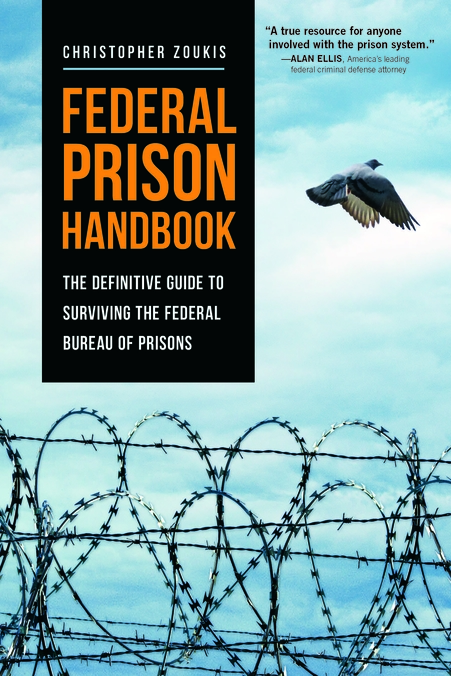Fifth Circuit Settles In-Circuit Confusion, Holds Implicit Extension of Time to File State Appeal Tolls AEDPA Clock to File Federal Habeas Petition
he U.S. Court of Appeals for the Fifth Circuit held on February 3, 2020, that when a Louisiana state court grants an extension of time, even implicitly through other actions, a state post-conviction action remains “pending” to toll the one-year clock under the Antiterrorism and Effective Death Penalty Act (“AEDPA”). The Court’s decision settled conflicting opinions among the federal district courts in Louisiana on the issue.
When Colby Leonard’s post-conviction relief motion was denied by a Louisiana state court in 2013, he applied to the state appellate court for a supervisory writ to appeal the denial. However, Leonard failed to properly file the application for the writ, so the appellate court dismissed it. But the court gave him a break: “In the event Leonard elects to file a new application with this Court, the application must be filed on or before October 22, 2013.” Leonard then filed a proper application in the appellate court before that date.
When Leonard’s writ was denied on the merits and the Louisiana Supreme Court denied review, he filed a federal habeas corpus petition in the U.S. District Court for the Middle District of Louisiana less than a month later. This time, Leonard’s claims were never addressed, because the district court dismissed it as too late, never reaching the merits.
The district court found that Leonard’s one-year AEDPA clock started on April 8, 2010, when his conviction became “final,” that is, when the Louisiana Supreme Court denied review of his criminal appeal. Thereafter, the time that Leonard’s state post-conviction action remained pending in the state courts did not count against his one-year limit. But, the district court concluded that because Leonard’s application for a supervisory writ wasn’t “properly filed,” that ended the tolling of the clock, and it expired long before he filed his federal petition. This was despite that fact the state appellate court granted Leonard more time to file a proper application.
While the district court acknowledged that the law was “unclear” on whether a state appellate court extending the time to file another application for a writ “effectively amounted to an extension of time that operated to toll the limitation period,” it still denied a certificate of appealability (“COA”) to allow Leonard to take an appeal to the Fifth Circuit.
The Fifth Circuit, however, granted a COA, noting that it was “arguable” whether the state court’s implicit grant of an extension of time to file a supervisory writ tolled the AEDPA clock, being that the federal district courts within Louisiana have come up with conflicting rulings on the question.
Under 28 U.S.C. § 2244(d)(1), a federal habeas corpus petition by a state prisoner must be filed within one year of a conviction becoming “final.” However, the one-year clock stops while a state post-conviction action that is “properly filed” in the state court remains “pending.”
A state post-conviction application or motion “is ‘properly filed’ when its delivery and acceptance are in compliance with the applicable laws and rules governing filings.” Artuz v. Bennett, 531 U.S. 4 (2000). And under § 2244(d)(2), a state post-conviction action remains “pending as long as the ordinary state collateral review process is ‘in continuance’ — i.e., until the completion of that process,” the Supreme Court explained in Carey v. Saffold, 536 U.S. 214 (2002). In other words, it is pending until the state post-conviction process has made its way through the state courts, including any appeals.
The purpose of this rule, Saffold explained, is to allow a prisoner to invoke one complete round of the state’s established review process, giving the state courts the first chance to fix any constitutional errors.
The district court ruled that Leonard’s post-conviction motion did toll the AEDPA clock while it was pending, but because Leonard’s application for a supervisory writ to appeal was not “properly filed,” his post-conviction action did not remain “pending” to toll the clock. The court concluded that the rejection of his application effectively ended his post-conviction procedures, so the AEDPA clock started running.
Such a situation has divided the federal district courts in Louisiana, the Fifth Circuit noted. Under Louisiana law, a prisoner may appeal the denial of a post-conviction motion not by filing an appeal, but only by “invoking the supervisory jurisdiction of the court of appeal,” the Court explained. Here, the Louisiana appellate court rejected Leonard’s application for a writ, but it did authorize him to file another application within a set time. “The only logical reading of the appellate court’s action is that it granted Leonard an extension of time for filing a proper writ application,” the Court reasoned.
It made no difference that Leonard was not the one who asked for the extension of time. “In light of the appellate court’s extension of time — and Leonard’s filing a prior writ application within that period — we conclude that Leonard’s state post-conviction process remained ‘in continuance’ and therefore ‘pending’ under § 2244(d)(2),” the Court concluded, citing Saffold.
The Court also said that the district court focused on the wrong “application” when it determined that Leonard’s post-conviction action ended when his application for a supervisory writ was rejected. “The pleading that must be ‘properly filed’ under [§ 2244(d)(2)] is a trial-court petition — namely an application for state post-conviction [review]” in the state trial court, the Fifth Circuit clarified.
The state appellate court granting Leonard authorization to refile a proper application for a supervisory writ to appeal the trial court’s denial was effectively an extension of time for him to appeal, which made his state post-conviction action still “pending” to toll the clock, the Court held. Therefore, his federal habeas petition was timely-filed.
As a digital subscriber to Criminal Legal News, you can access full text and downloads for this and other premium content.
Already a subscriber? Login
Related legal case
Leonard v. Deville
| Year | 2020 |
|---|---|
| Cite | 949 F.3d 187 (5th Cir. 2020) |
| Level | Court of Appeals |
| Appeals Court Edition | F.3d |





